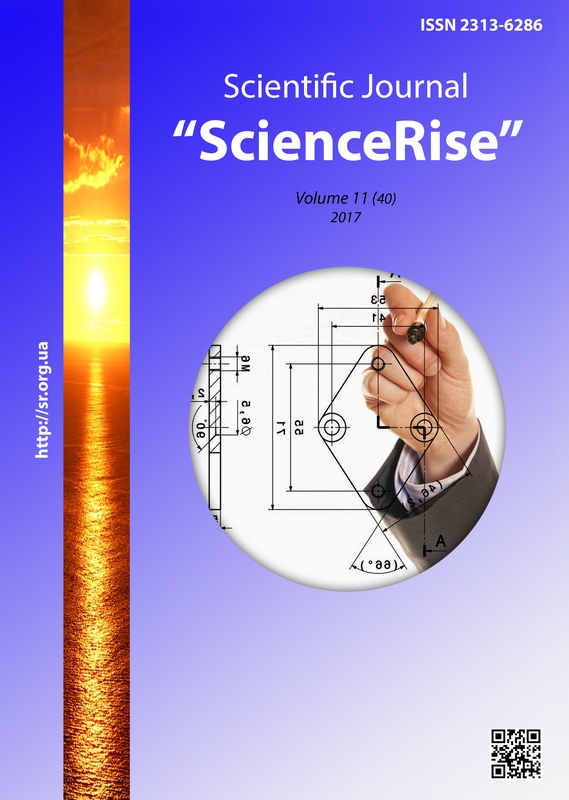Запобігання займання газових сумішей н-гептану комбінованими системами ударних хвиль та об’ємних вогнегасних речовин
DOI:
https://doi.org/10.15587/2313-8416.2017.116177Ключові слова:
гази флегматизатори, інгібітори горіння, аерозольне пожежогасіння, ударні хвилі, вогнегасний аерозольАнотація
Теоретично обґрунтовано та експериментально підтверджено можливість використання ударних хвиль та об’ємних вогнегасних речовин для попередження займання газових горючих середовищ. Встановлено, що запропонована комбінована система, забезпечує ефективне попередження займання – флегматизування газової н-гептаноповітряної суміші при одночасному зниженні концентрації аерозолю та газів СО2 або N2 до 4 разів порівняно з їх індивідуальними значеннями
Посилання
Brushlinsky, N., Ahrens, M., Sokolov, S. (2016). World Fire Statistics. National committees CTIF of Russia, Germany, USA. Center of Fire Statistics, 64.
Baratov, A. N., Ivanov, B. N. (1971). Pozharotushenie na predpriyatiyakh khimicheskoy, neftekhimicheskoy i neftepererabatyvayushhey promyshlennosti. Moscow: Khimiya, 414.
Ksandopulo, G. I. (1980). Khimiya goreniya. Moscow: Khimiya, 202.
Shrayber, G., Porst, P. (1975). Ognetushashhie sredstva. Khimiko-fizicheskie protsessy pri gorenii i tushenii. Moscow: Stroyizdat, 240.
Balanyuk, V. M., Kozyar, N. M., Garasymuyk, O. I. (2016). Study of fire–extinguishing efficiency of environmentally friendly binary aerosol-nitrogen mixtures. Eastern-European Journal of Enterprise Technologies, 3 (10 (81)), 4–11. doi: 10.15587/1729-4061.2016.72399
Balanyuk, V. M., Kozyar, N. M., Garasymuyk, O. I. (2016). The usage of gas and aerosol powder extinguishing mixtures for protection of incendiary mixtures. ScienceRise, 5 (2 (22)), 10–14. doi: 10.15587/2313-8416.2016.69333
Christian, S. D., Kerr, P., Tucker, E. E., Sliepcevich, C. M., Hagen, A. P. (1997). Synergism in flame extinguishment: New results for mixtures of physical and chemical agents. Halon OptionsTechnical Working, 88–105.
Balanyuk, V. M. (2017). The Increase of Fire Extinguishing Efficiency of Gas-Aerosol Binary Mixture Using Shock Waves. BiTP, 46 (2), 72–86. doi: 10.12845/bitp.46.2.2017.5
Otkidach, M. Ya. (2001). Flehmatyzuvannia hazovykh horiuchykh seredovyshch iz zastosuvanniam povitrorozdilnykh membrannykh ustanovok. Kharkiv, 20.
Derevynskyi, D. M. (2010). Pozhezhna nebezpeka obiektiv z naiavnistiu hazovoho horiuchoho seredovyshcha ta nahritykh tekhnolohichnykh poverkhon u zamknenomu prostori. Problemy pozharnoi bezopasnosty, 27, 59–65.
Glazkova, A. P., Kozhin, V. N., Tsopa, G. A., Aleksandrov, V. E. (1978). Gazogeneriruyushhie zaryady ispolnitel'nykh ustroystv sistem lokal'nogo pozharotusheniya. Problemy okhrany truda. Kishinev: Shtiintsa.
Balanyuk, V. M., Zhurbinskiy, D. A. (2013). Phlegmatisation of flammable gas mixtures by aerosol sprays BiTP, 32 (4), 53–58. doi: 10.12845/bitp.32.4.2013.6
##submission.downloads##
Опубліковано
Номер
Розділ
Ліцензія
Авторське право (c) 2017 Volodymyr Balanyuk, Vasily Kovalishin, Nazariy Kozyar

Ця робота ліцензується відповідно до Creative Commons Attribution 4.0 International License.
Наше видання використовує положення про авторські права Creative Commons CC BY для журналів відкритого доступу.
Автори, які публікуються у цьому журналі, погоджуються з наступними умовами:
1. Автори залишають за собою право на авторство своєї роботи та передають журналу право першої публікації цієї роботи на умовах ліцензії Creative Commons CC BY, котра дозволяє іншим особам вільно розповсюджувати опубліковану роботу з обов'язковим посиланням на авторів оригінальної роботи та першу публікацію роботи у цьому журналі.
2. Автори мають право укладати самостійні додаткові угоди щодо неексклюзивного розповсюдження роботи у тому вигляді, в якому вона була опублікована цим журналом (наприклад, розміщувати роботу в електронному сховищі установи або публікувати у складі монографії), за умови збереження посилання на першу публікацію роботи у цьому журналі.

